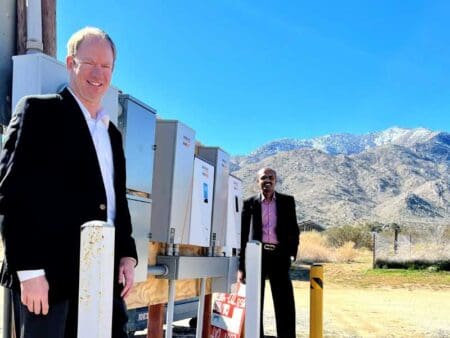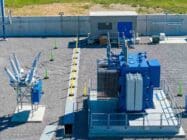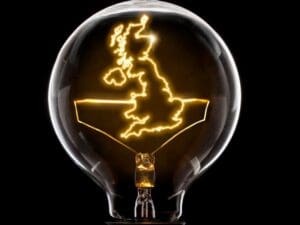
As extreme heat records fall across the West of the US and strain the power grid, San Diego Gas & Electric (SDG&E) is testing new approaches to demand response through a new virtual power plant.
Rather than relying on the traditional uni-brand battery-based system, the utility is focusing on the integration of smart thermostats, such as rooftop solar and other connected resources, such as water pumps, alongside battery storage within a centralised system to reduce energy demand.
SDG&E has been piloting the unique virtual power plant (VPP) system since December 2022, which consists of multiple customer-owned devices, to support the grid during peak hours.
According to SDG&E, most VPPs typically involve only one brand or one type of device, usually battery energy storage.
SDG&E’s VPP pilot involves a diverse range of devices within the same system, including smart thermostats, well water controllers and battery energy storage systems.
The pilot is taking place in Shelter Valley, a remote community in eastern San Diego County.
Have you read:
Germany’s sonnen announces 250MWh VPP as ‘Europe’s largest’
Iberdrola taps into automated demand response with Spanish VPP
‘New kid on the block’ knows how to future-proof the grid
Participants in the pilot include single-family homes with existing rooftop solar and the Shelter Valley Community Center, which serves as a resource centre for the community during emergencies. The centre received free installation of two batteries onsite.
In August, as temperatures increased, SDG&E deployed its VPP pilot three times to support the grid during peak demand periods. The connected devices functioned as expected.
When VPP participants receive a message about the potential for their devices to be turned off or discharge electricity to support the grid, they can opt out for certain devices, except battery storage. According to the utility, to date the opt-out rate has been very low.
The pilot first came online December 2022 and will run through December 2023.
Because of how well the pilot project has performed, SDG&E is now considering expanding the programme to other areas in the future.
Since the start of the pilot, the VPP has been tested through 17 simulated demand response events.
Virtual Power Plants
VPPs use advanced software to aggregate and coordinate the functions of a collection of small-scale, decentralised resources located at customers’ homes and businesses to meet grid needs.
A VPP network can comprise many devices and resources, including home appliances such as electric vehicles and chargers to HVAC equipment and solar plus battery energy storage systems.
Software programmes run VPPs in concert with grid operations to dispatch communications signals to devices in the VPP network to either power down or discharge electricity from existing resources back to the grid.
“The beauty of a virtual power plant is it can leverage existing resources to provide significant grid reliability benefits – with zero incremental emissions,” said SDG&E chief commercial officer Miguel Romero.
“When hundreds or thousands of businesses or homes are connected to a VPP and their resources are flexibly managed to charge or discharge electrons, they can help keep the lights on during hot summer days.”








